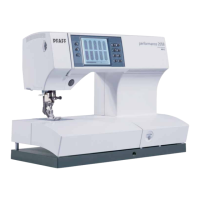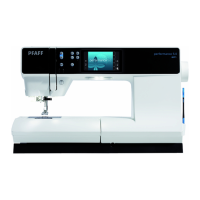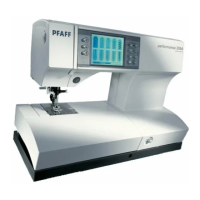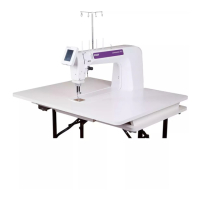B
A
4:5
Utility Sewing
Blindhem stitch - No 15
The blindhem stitch is used to make invisible hems on skirts, trousers
and home dec projects.
• Finish the edge of the hem.
• Fold and press the hem allowance to the wrong side.
• Fold the hem back on itself so approximately 3/8” (1 cm) of the
finished edge extends beyond the fold. The wrong side of your
project should now be facing up.
• Place the fabric under the presser foot so that the fold runs along
edge guide A.
• When the needle swings into the fold it should catch a small
amount of fabric. If the stitches are visible on the right side, adjust
edge guide A by turning adjusting screw B, until the stitch that
catches the hem just barely shows.
Stretch blindhem stitch - No 16
The stretch blindhem stitch is especially suitable for stretchy fabrics,
because the zigzag in the stitch lets the seam stretch. The hem is
finished and sewn at the same time. There is no need to finish the raw
edge first on most knits.
Create the blindhem as described above.
Rolled hem with straight stitch - No 1
Use the rolled hem foot no. 7 to finish the edges of blouses, scarves,
or ruffles without having to iron the edges beforehand. Hemming
prevents the edges from fraying and produces a neat and durable edge
finish.
• Double-fold the fabric edge (about 1/8 inch / 3mm per fold).
• Place the folded fabric edge under the rolled hem foot and sew a
few stitches to secure.
• Turn the hand wheel towards you until the needle is at its lowest
point. Raise the presser foot and slide the fabric into the scroll of the
foot.
• While sewing, guide the fabric edge evenly into the foot. When roll-
hemming, make sure the raw edge of the fabric butts against the
left edge of the opening in the rolled hem foot. Be careful that the
fabric does not run underneath the right side of the presser foot.

